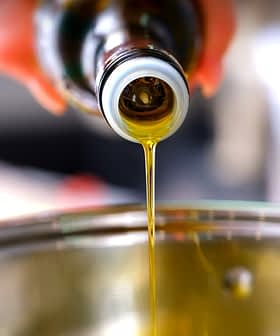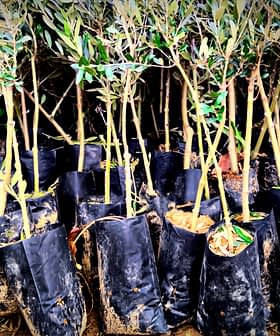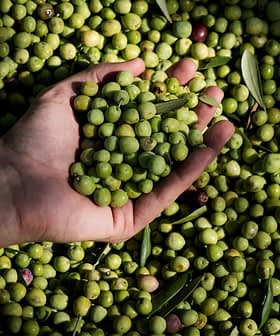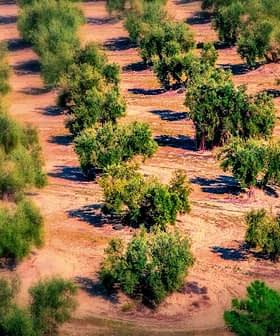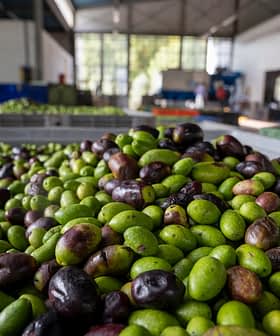S. American Olive Oil Sector Celebrates Successes and Examines Challenges
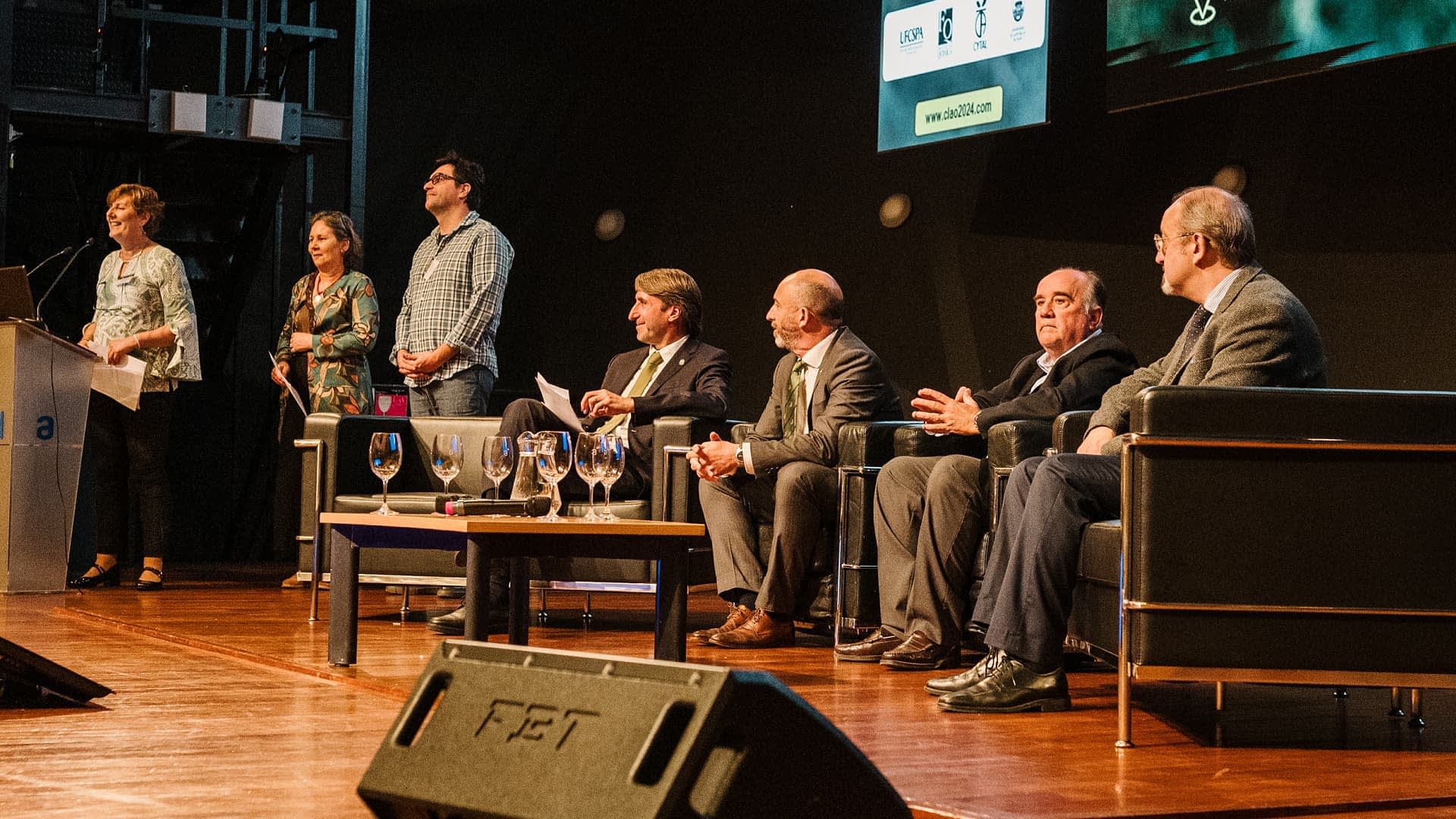
The article discusses a conference in Montevideo, Uruguay, where olive oil producers from five countries in South America gathered to address challenges and opportunities in the industry. The event focused on improving quality, promoting sustainability, and exploring new revenue streams, such as using olive oil byproducts for biofuel and creating nutraceutical extracts. Additionally, discussions included the need to educate consumers, improve regulations, and develop oleotourism to support the growth of the olive oil sector in the region.
MONTEVIDEO, Uruguay – As olive trees blossom across the hemisphere, 160 farmers, millers, researchers, students, government officials and members of the olive oil sector from five countries gathered in Montevideo, Uruguay, to discuss the challenges and opportunities facing olive oil producers in South America.
The three-day event kicked off at the Uruguayan Technical Laboratory with an award ceremony for the winners of the International Olive Council’s first Southern Hemisphere-specific edition of its Mario Solinas olive oil quality awards.
The following day, IOC executive director Jaime Lillo opened the second Latin American Olive Oil Conference at the new headquarters of Antel, Uruguay’s state-run telecommunication company.
See Also:World Competition Wins Bring Relief to Southern Cone Producers“There is energy here,” he said. “Latin America is having an olive oil moment, and these conferences are important. There is a passion and dedication to quality and a vision of the future.”
However, Lillo called on South American producers to confront the challenges posed by climate change and said the largest olive oil-producing region outside of the Mediterranean basin must base long-term success on improving quality across the olive oil grades while effectively communicating olive oil’s sustainability and health benefits.
The conference emphasized the role of scientific investigation in addressing these issues. Special attention was also paid to the role of oleotourism in making a notoriously low-margin business more profitable for small farmers.
To that end, Uruguayan Tourism Minister Eduardo Sanguinetti and the dean of the chemistry department of the University of the Uruguayan Republic followed Lillo with prepared statements about the sector’s importance.
Before yielding the floor to the first presenter, Uruguayan Olive Association president Gonzalo Aguirre drove the point home. “Research and development is necessary for the sector’s success,” he said.
The first day of the conference was dominated by discussions about the specific challenges facing South American olive farmers and the role of emphasizing quality to consumers.
Sebastián Sánchez, a chemical engineering professor at the University of Jaén in Spain, started the conference by discussing the immense commercial potential of olive oil production byproducts, especially olive pits.
“The olive pit has a high energy content, about 4,800 kilocalories per kilogram [gasoline’s energy content is 10,915 kilocalories per kilogram], and a strong demand exists for use as biofuel,” he said.
“Equipment that separates the olive pit from the rest of the olive is the piece of machinery in an olive mill that pays for itself the fastest,” Sánchez added.
He also pointed to the potential for South America to invest in these facilities to create additional revenue streams, and the potential to create nutraceutical extracts of oleuropein and hydroxytyrosol from olive leaves removed during pruning and separated during the milling process.
A pair of Uruguayan researchers – Blanca Gómez and Ignacio Vieitez – reiterated this point, indicating that after about $2.2 (€2.07) million of investment in the host country, a viable industry producing animal feed, cosmetics and even pharmaceutical products could exist.
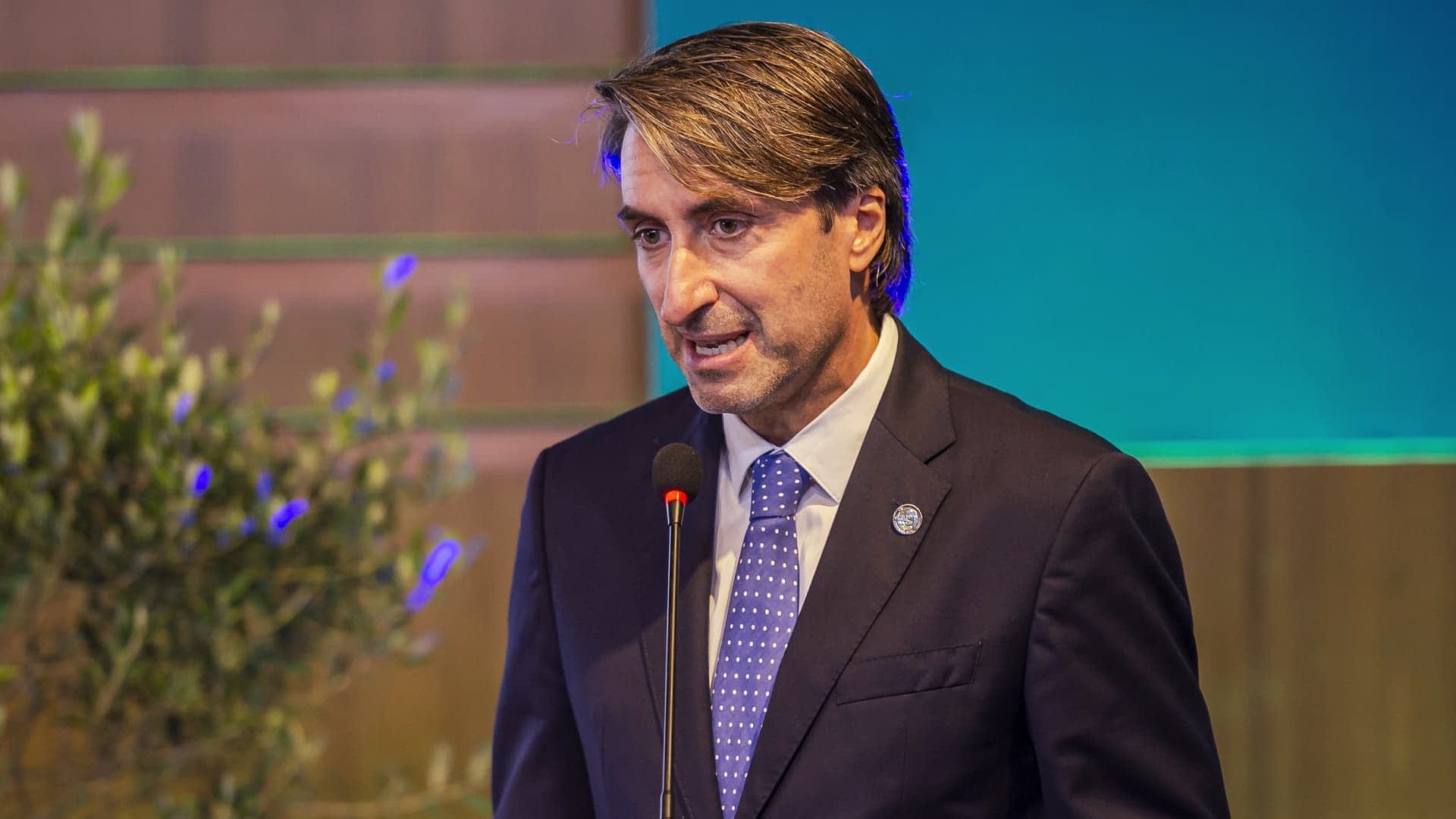
Jaime Lillo said plans are underway for the next edition of Southern Hemsiphere edition of Mario Solinas. (Photo: Manuel Mendoza)
Other presenters discussed the need to promote and communicate quality to consumers on the continent, which has a population of nearly half a billion.
Véronica Aranti, head of the Mendoza olive oil tasting panel and a researcher at the National University of Cuyo, discussed getting the Arauco-based blend certified as a Mendoza Geographical Indication.
“[The Mendoza GI] represents a before and after in Mendoza,” she said, pointing out how decreasing olive cultivation in the region emphasized the need to highlight quality.
Anecdotal evidence from prominent producers in Mendoza has shown that the GI, which came into force in 2022, has promoted olive oil consumption among visitors to the wine-soaked region, especially Brazilians.
Jorge Astudillo, a consultant from Atacama, Chile, also discussed how the Valle del Huasco Protected Designation of Origin (PDO) certification, the first PDO in South America, was a first step to promoting high-quality extra virgin olive oil consumption in the country.
“The combination of climate, soil and water of the area, together with a traditional cultivation system, generates a different and valuable product, reflected in the high quality of the product due to its polyphenol content, oleic acids and organoleptic characteristics,” he said.
However, he warned that producers would need to be patient since the cost of producing PDO-certified extra virgin olive oil is higher than other extra virgin olive oil, and the demand for PDO products remains nascent across the continent.
Other researchers focused on some of the challenges facing producers in South America, away from the opportunities provided by promoting quality and the circular economy.
Mercedes Arias, an agricultural engineering researcher at the University of the Uruguayan Republic, discussed the potential impact of the lack of chilling units on olive farmers.
In a separate panel, she also discussed challenges associated with pollination due to changing temperature and precipitation patterns.
Researchers from Argentina, Brazil and Uruguay later discussed the importance of identifying well-adapted cultivars to the unique climatic challenges in South America and how they may fare as the climate continues to change,
“We need to preserve and learn about olive genetic biodiversity,” said Rogeiro Oliveira from the Brazilian Agricultural Research Company.
Paula Conde, a researcher at the Uruguayan National Institute of Agricultural Research (Inia), later emphasized the need for Uruguayan producers to focus on medium-density groves instead of pivoting to high-density.
“I’m convinced that switching to super-high-density is not a good idea for us,” she said. Despite the lower cost, she said Uruguay’s climate is not well suited to trees planted so closely together due to the wet autumns and high levels of humidity year-round.
The second day of the conference featured discussions of milling technologies and techniques, legislation and market trends around olive oil in South America, the use of extra virgin olive oil, its derivatives and oleogels in cooking, infusions and baking, respectively, and the role of oleotourism for farmers and millers.
The morning began with a discussion about using enzymes in talc in difficult pastes, helping millers maximize oil yield from early-harvest and high-humidity olives, while maintaining quality.
“The use of enzymes produces olive oil with lower free acidity; we’re not just looking for yield,” said Miguel Amarillo, a food engineer at the University of the Uruguayan Republic.
María Lourdes Toujas, an award-winning miller with operations in Uruguay and Argentina, added that some of the companies with which she was involved have demonstrated that the use of enzymes also had no impact on the organoleptic profiles of the extra virgin olive oils produced.
The technical discussion gave way to a round table discussing some of the regulations surrounding olive oil, including areas for improvement.
“A gaping hole we have in Argentina is that the food laws do not contemplate sensorial analysis,” Toujas said, which means producers can get away with labeling virgin olive oil that meets the physio-chemical requirements but not the sensory ones as extra virgin. “We are working to incorporate this,” she added.
After discussing health benefits, including recent research into the protective role of extra virgin olive oil on non-alcoholic fatty liver disease, another round-table event discussed the market realities in South America.
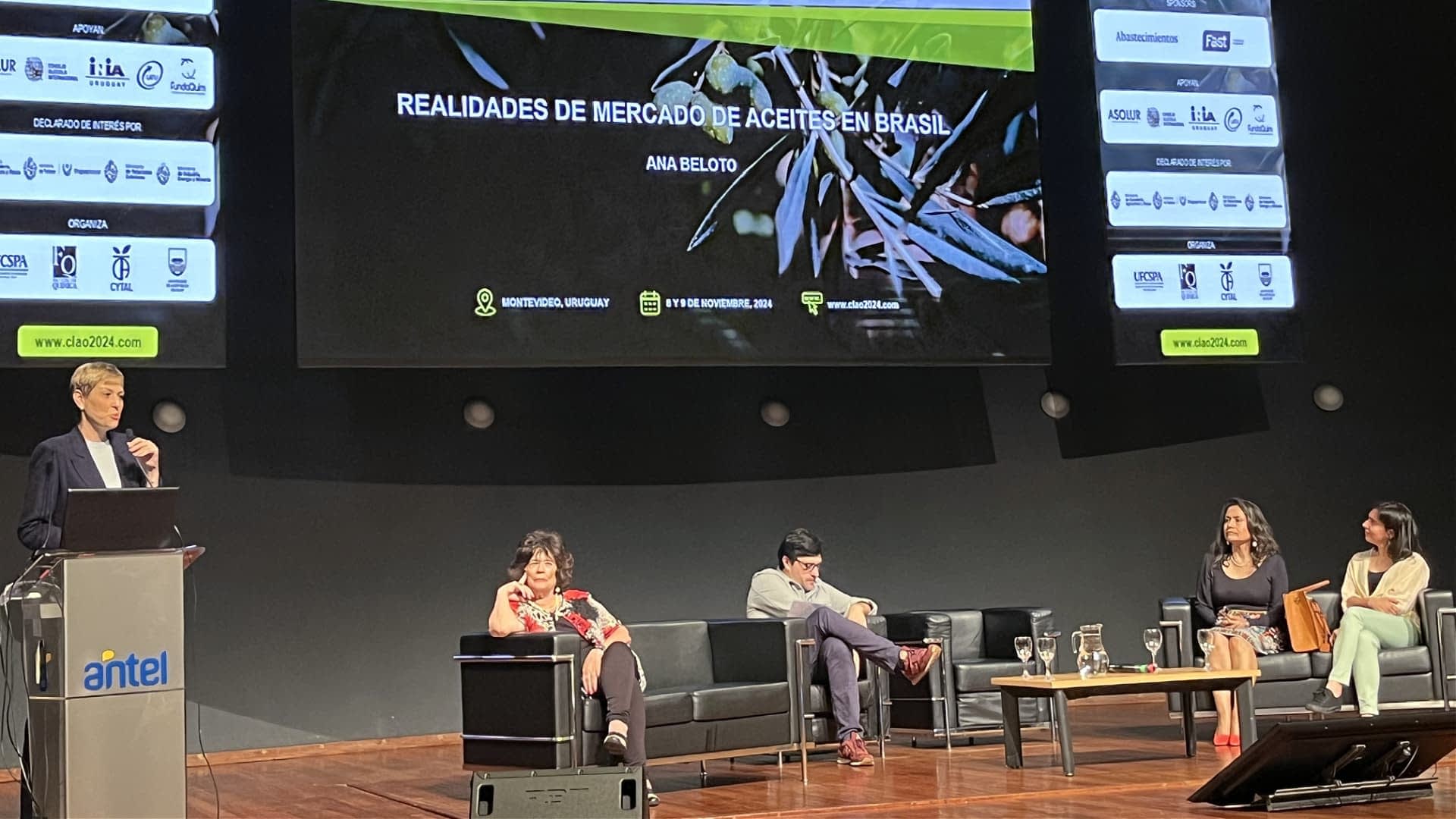
Ana Beloto discussed the need to meet consumers where they are, finding ways to use olive oil that fit into the culture. (Photo: Daniel Dawson)
Ana Beloto, a Brazilian olive oil sommelier, said companies exporting to the world’s second-largest olive oil importer outside of Europe must consider cultural norms.
She said Easter and Christmas are key dates in the Brazilian calendar with high potential for olive oil sales, and producers must capitalize on this by incorporating olive oil into regional recipes and educating the healthcare sector and retailers about the product.
“We have to educate everyone in the value chain, including retailers and distributors,” she said.
Mónica Bauzá, an agriculture professor specializing in olive oil at Argentina’s National University of Cuyo, said the region must shift focus away from bulk exports to Europe to individually packaged production. “We’ve changed [in Argentina] and are moving toward quality,” she said.
Lyris Marlene Monasterio Muñoz, a member of the Peruvian producer association, Pro Olivo, added that her country also seeks to stand out for quality and is preparing a feasibility study on applying for a PDO certification for Tacna extra virgin olive oil.
A lunch break was followed by presentations on using extra virgin olive oil in the diverse regional cuisines of Latin America, the use of oleuropein extracts in infusions and new applications for using oleogels in baking.
The conference concluded with a round table of presenters from Argentina, Brazil, Chile and Uruguay, who discussed the possibilities and challenges surrounding oleotourism.
María Isabel Hagg, from Argentina’s National University of the South, said that oleotourism is just beginning to take root in Argentina but could follow the well-established path of wine tourism.
She added that olive oil-specific tourism routes are already being established in Mendoza, Córdoba, Catamarca and the province of Buenos Aires.
Meanwhile, Alejandra Cabrera, from Uruguay’s Tourism Ministry, argued that tourism could be used as a tool to develop olive oil production by supporting and strengthening the infrastructure around farms and mills and eventually developing olive oil routes similar to those found in Argentina.
From the Chilean point of view, Astudillo, the consultant, returned to the stage and said that Chile has everything necessary for a robust oleotourism sector, but more needed to be done to develop olive oil routes, similar to what is happening in Argentina and Uruguay.
“Chile is far from having the oleotourism that Argentina and Uruguay have,” he said. “We don’t have bridges connecting the producers in each valley, but the potential exists.”
The event closed with the announcement that the third Latin American Olive Oil Conference would be held in Porto Alegre, the capital of Rio Grande do Sul, in 2026.
